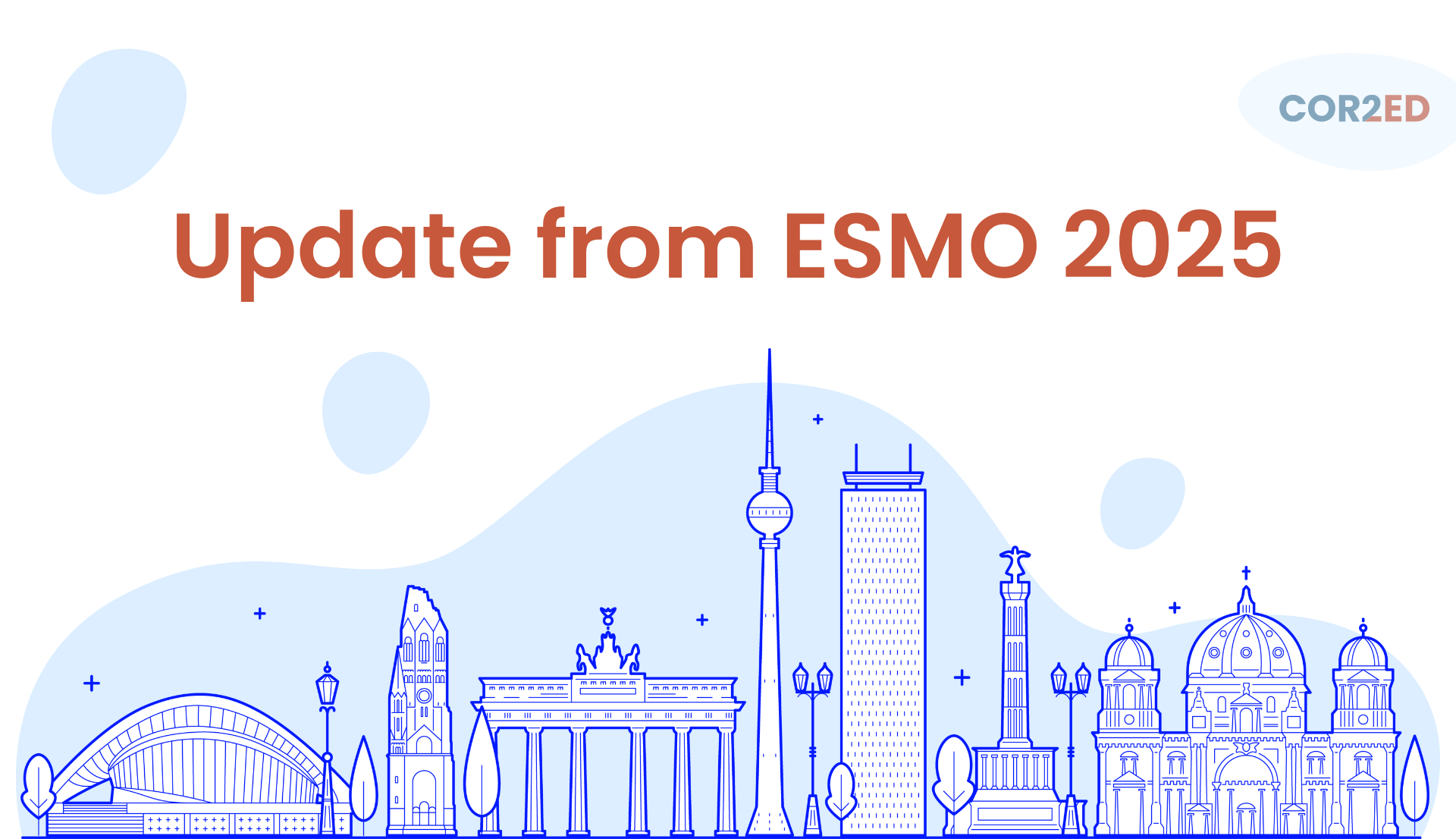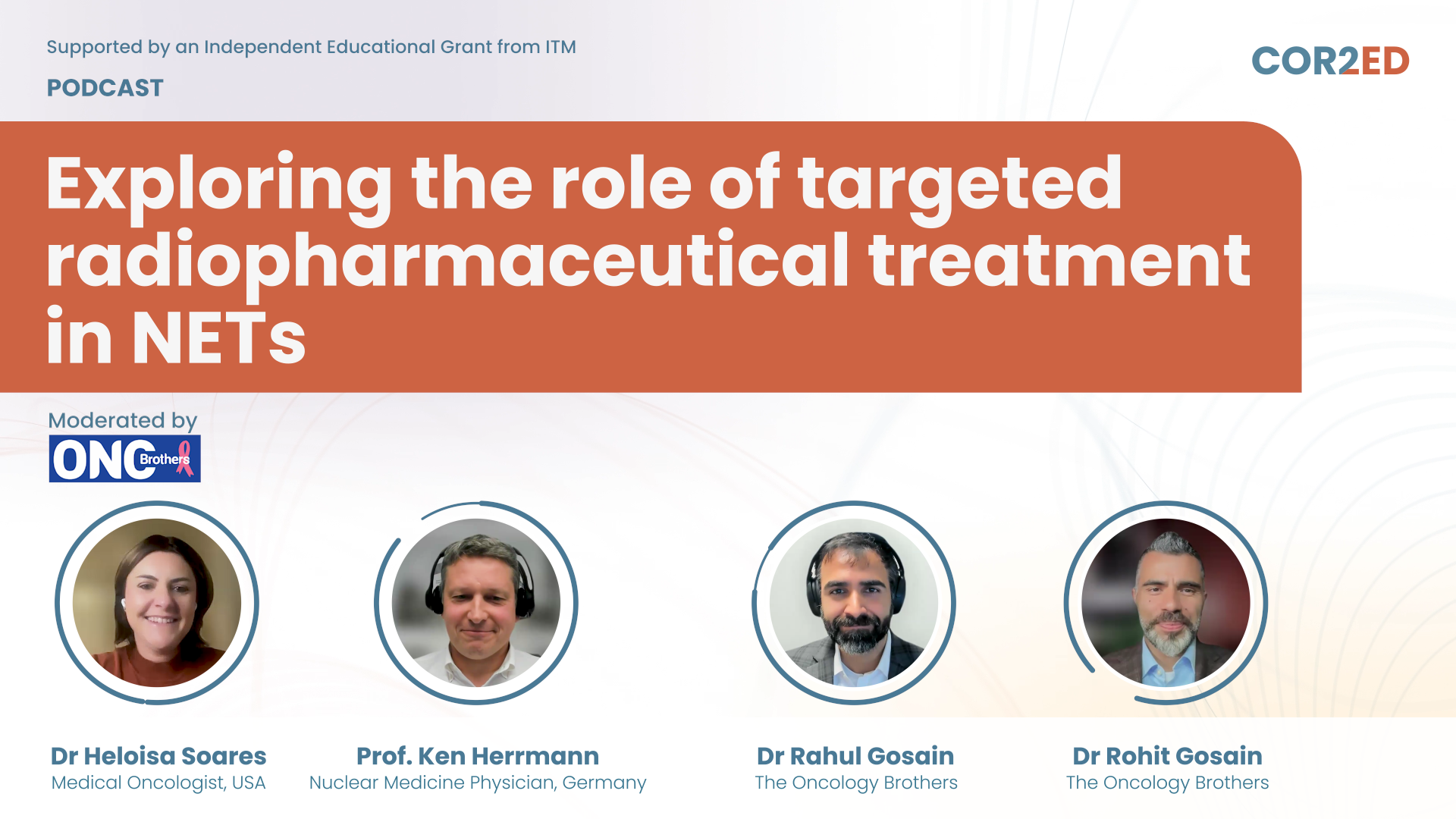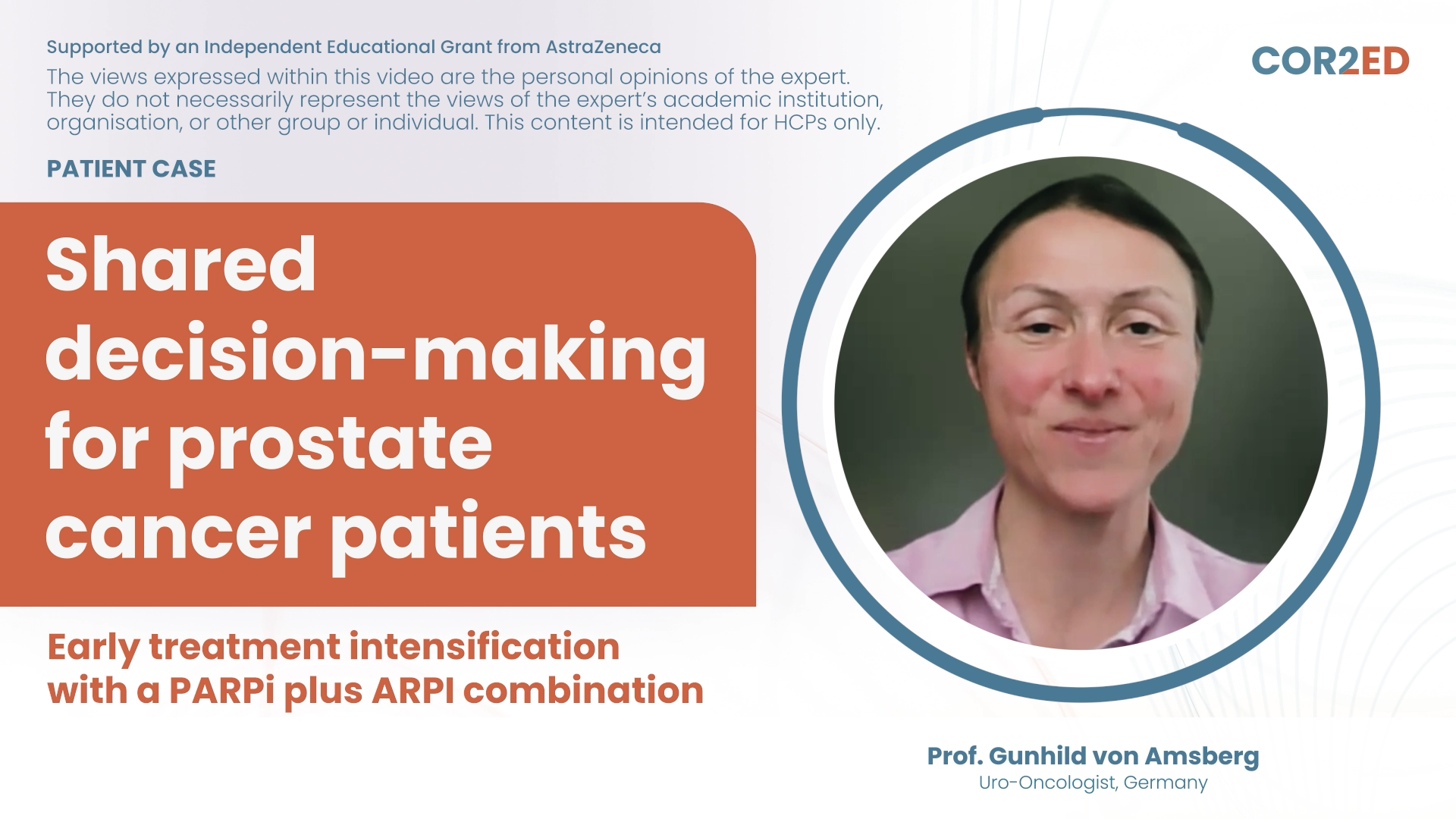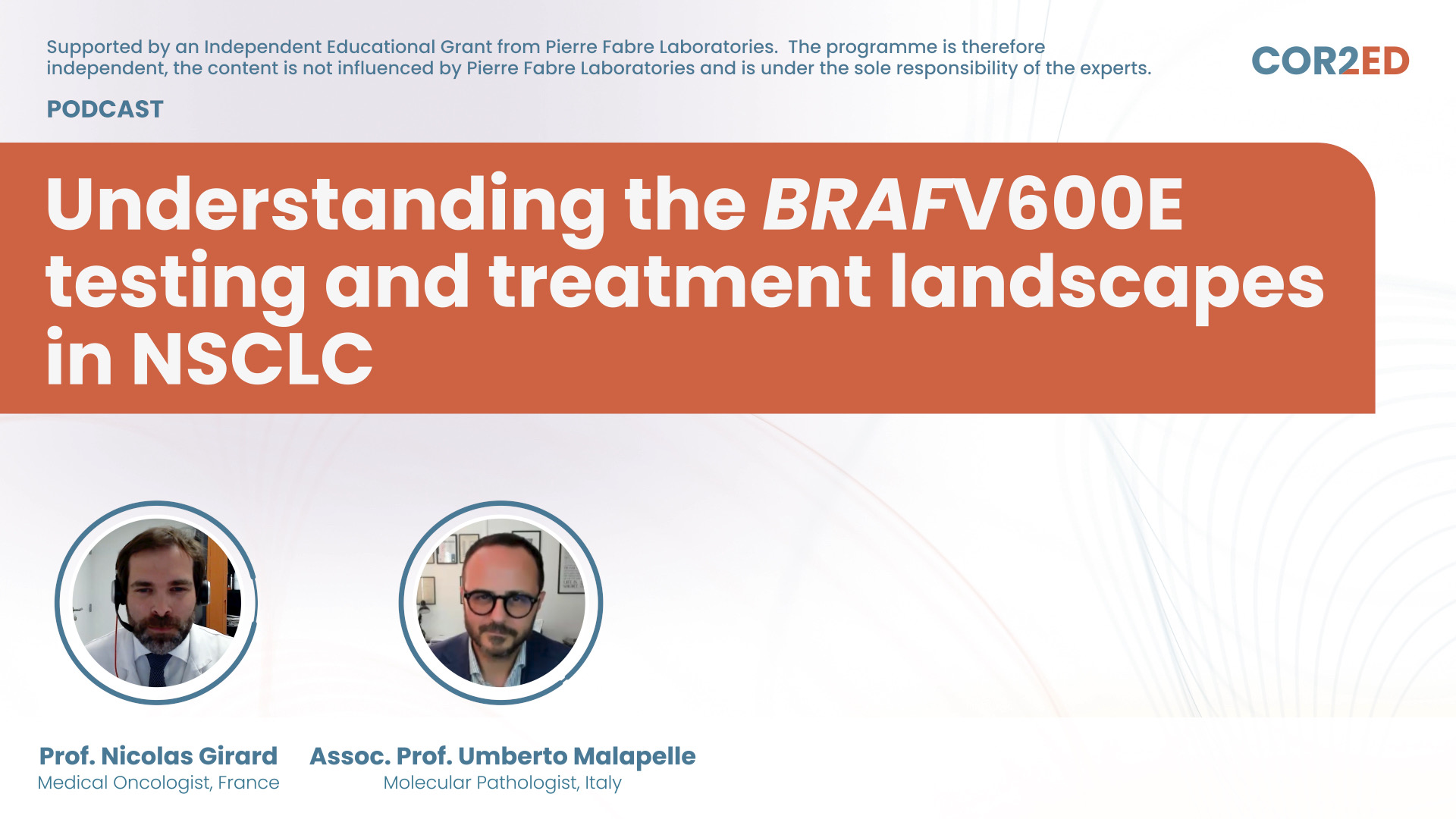Dr Aman Chauhan
Hello everybody. Today we will be discussing a very unique subset of neuroendocrine oncology called high-grade poorly differentiated neuroendocrine carcinomas.
I have a very esteemed colleague who has spent a significant amount of time advocating for neuroendocrine carcinoma patients. Ms. Susan Meckler-Plummer.
Susan Meckler-Plummer, RN
Hi, my name is Susan Meckler-Plummer and I am a nurse. I have been a nurse my entire career. I started in oncology when my husband was diagnosed 13 years ago. I have been working with neuroendocrine carcinoma patients since 2013.
Dr Aman Chauhan
My little journey in high-grade neuroendocrine carcinoma started when I was getting trained with Dr Lowell Anthony at the University of Kentucky. I was seeing lots and lots of cases with high-grade neuroendocrine cancers. But even extra thoracic or EP-NEC, extra pulmonary neuroendocrine carcinomas, they were not as rare as I would have thought or read in the literature. And there were no treatment options.
So today we have a fantastic agenda lined up for this podcast on this very under-studied, under-talked topic. But it is very impactful for the patients, and it is unfortunately a very aggressive disease with still very poor outcomes. However, there is a ray of hope, and we will discuss that.
Before we delve deeper into the nitty gritty, let us first understand what high-grade neuroendocrine cancers are. When I see a patient who has been diagnosed with neuroendocrine tumour or neuroendocrine carcinoma, I first like to orient the patient that this is not a single disease, it is rather a spectrum of diseases. Neuroendocrine neoplasm is a general umbrella term and they can come in different forms.
The first dichotomy, or the most important differentiation in different types of neuroendocrine cancer, is based on morphology or how these cancer cells look under the microscope. And based on that morphological characterisation there are primarily two types of neuroendocrine cancers. One is called neuroendocrine tumour. They are relatively slow growing as compared to neuroendocrine carcinomas or NECs, very fast growing, very fast-paced disease. And in some of these neuroendocrine carcinoma patients, the tumours can double in two weeks. So, a very different disease altogether.
This distinction between NET, neuroendocrine tumour, vs. NEC, neuroendocrine carcinoma, is very, very crucial because these are different diseases. They may sound similar, but they are very different diseases. Different prognosis, different outcome, different type of scans, different diagnostics, different therapeutics.
So that is very, very important. NEC can afflict many organ systems. It is not limited to just lungs or hepatobiliary tract, pancreas, colon, ovaries, cervix, you name it. I have seen neuroendocrine carcinomas from various organs, from larynx and head and neck region, et cetera. It can truly afflict many organ systems. One way to describe high-grade neuroendocrine carcinoma is based on the organ site. While small cell lung cancer is the commonest variety of high-grade neuroendocrine carcinoma, as I alluded earlier, together all these other smaller subsets, if you combine them as extra pulmonary or outside lung NECs, they do form a substantial number of patients who are a critical unmet need, and they are in need of therapeutic advances, and they affect patients young and old and from all walks of life.
Organ-system wise, we can segregate them between thoracic or pulmonary versus extra-pulmonary neuroendocrine carcinomas. The behaviour, however, is very similar and that is why most of the treatments are very similar. These are a very aggressive and very fast-paced type of cancer. So you have this sense of urgency.
That would be a good pivot to Susan, how is your experience with dealing with this disease and how do you, when you interact with the patient, what is your experience like, what are they going through, and what do you kind of guide them at the beginning of their journey?
Susan Meckler-Plummer, RN
It depends when the patient finds me, and that is exactly what happens. They find me and the group. When you get a diagnosis of this, when we got our diagnosis, there was nowhere. You know, 12 years ago, there was no group, there was no help. And comparing to an NET, we did not know the difference and that is a huge part of all of this. And that is, you know, in the one word that we use often, the word urgency, that is a huge part of the difference between NET and NEC.
Many patients are told at the very beginning that they have neuroendocrine cancer. It’s not specifically carcinoma. In which case they are then thinking, oh, this is okay, I am going to be okay. They are not told the difference between a NET and a NEC. And it is honestly because a lot of oncologists, community oncologists, really are not familiar with the difference and the aggressiveness of this. And I think that when people get this diagnosis, they go into a panic. I mean, that is what I went through. You do not know what to do. You run to social media, and this is really where we come in. Because I will talk to people from day one. They reach out to me, I talk to them, I educate them. But aside from that, it is the fear, the panic. I cannot use those words enough because it is something that, you cannot describe. I cannot describe it to you, the feeling that I had when I heard this news. And I think that is a big part of the problem, getting to the right doctors and getting the help they need. They are not getting the help they need. And this is part of the issue of why I do what I do. Because this group of patients needs help today and yesterday and we can get them the help that they need and calm that panic and calm those emotions. Because there is help today, there is help.
Dr Aman Chauhan
To your point, Susan, I completely agree. Especially after 2017, things got a little bit more nuanced in our world. Previously, all grade 3 neuroendocrine cancers used to be classified as neuroendocrine carcinoma. However, we knew that was not true because there are some patients who are very aggressive in terms of their disease biology and rapid onset of symptoms and progression. While others, despite having grade 3 disease, they are relatively slower growing. In 2017, the WHO formally classified that there are two types of high-grade neuroendocrine cancer, grade 3 NET versus NEC, which is by default always grade 3.
To your point, you are absolutely right that there is a big, sometimes a dilemma in terms of diagnosis when we see patients from places who do not see high volume, high-grade neuroendocrine cancers, there could be some time discrepancy between NET versus NEC. And fortunately, things are evolving towards better as we are learning more and more about the disease and also employing sometimes molecular testing in NGS and genetic testing to help us tease out differences between NEC versus NET. But you are absolutely right, that is one of the first issues.
In my experience another issue, as you alluded to, is the urgency of the matter. Once a patient has been diagnosed with a mass and has been diagnosed and had a biopsy and it is a poorly-differentiated neuroendocrine carcinoma, oftentimes our diagnosticians or the colleagues via GI doctors or surgeons or whosoever did help bring the diagnosis to the fore, they do not realise this is a much faster, aggressive disease. And oftentimes patient needs to be staged right away and started on treatment ASAP because of the rapidity of it. A lot of times for NEC patients we get them admitted and get them started on chemotherapy right away. It is not an unusual thing to do in our world. So that understanding of the urgency of how fast we need to deal with getting the clarity of diagnosis, starting the treatment is very, very important.
And that brings to the third problem, that when people try to learn about this disease, there are not very many resources online teaching them about NEC. And thanks to your society, the Neuroendocrine Cancer Foundation, and others, they are slowly now focusing on NECs. You have been primarily focused on NEC to begin with, but even the other organisations are now trying to showcase the importance and urgency of NECs and increasing some educational guidance regarding that topic. But it is very important because patients can get confused. NET is a very different disease with different treatments.
Susan Meckler-Plummer, RN
I was just going to say that at times people will find me and they will have their all their work, you know, they will have their work-up, they will have their scans, but they are being scanned and treated as if they have a NET. And then when I am talking to them, it is, they do not understand because their physician does not understand. And, and who are you going to believe really? You are going to believe your doctor.
Sometimes people are very sceptical because they want to believe that this is something they can live with for a very long time. But you know, there are times where I am telling people for the first time what their physician is not telling them. It is an awkward place for me to be at times because they want to believe their doctors and it just, it does not happen. Unfortunately, I hear stories that I could write a book about, of the misdiagnosis, the mistreatments, the scans that are wrong, the testing that is wrong. It is so important.
Dr Aman Chauhan
In my experience, things are slowly but surely improving. There was a time I used to, for example, see patients getting DOTATATE PET for NEC diagnosis where we know an appropriate PET scan would be FDG PET, whereas for a well-differentiated tumour is when we will be doing a DOTATATE PET. Those things are slowly but surely improving. I am seeing a better understanding of NET versus NEC in our colleagues.
And you know, that brings us to how do we manage these patients and what do these patients first present with? Well, EP-NECs, or extra-pulmonary neuroendocrine carcinomas, really oftentimes presents with significant weight loss, and this is unintentional weight loss. And based on whatever organ site is affected, patient oftentimes presents with symptoms. For example, if it is a rectal neuroendocrine carcinoma, they may present with blood in the stool or intermittent diarrhoea, constipation, or pain. If it is neuroendocrine cancer affecting the cervix or gynecologic organ, they might have heavy menses or, you know, bleeding from vagina. It really depends on what organ site is affected. So, weight loss, pain being some of the common symptoms oftentimes. But many times patient may not have symptoms and they are diagnosed incidentally. And that is what is scary about this cancer is because it does not give you clues while it is growing and spreading and creating havoc.
Have you noticed any commonalities between the patients that you often meet, how they present, and what are their presenting symptoms, and how do they approach the early phase in the diagnosis?
Susan Meckler-Plummer, RN
I can use my story for that because my husband Larry did not have any symptoms. I mean, he woke up, he was perfectly fine one day, woke up hours later during the night with belly pain. And, you know, you think it is an appendix. “What could this possibly be?” And then to be told an hour later that there are 90 tumours on your liver when, as a nurse, and he had a doctorate in pharmacy, worked for a pharmaceutical company for his whole career in oncology, when we got this diagnosis, as I said, he worked in oncology, and he had never heard of this.
He had no symptoms. And it was very scary to know that he had all of this disease in him. You know, as it turned out, it was at every bone, it was everywhere. And we had no idea. And often I hear this, “oh, but I feel so good.” You know, “I run, I eat organic, I do keto, I do all these things.” “I do supplements and, you know, so I cannot really be sick.” But, you know, this is more. I hear more of that than I hear of people, you know, being admitted with symptoms that they do not know what they are. I think that more in the NET world where they suffer with chronic symptoms for a long period of time, that typically is not the case, from what I have seen, with neuroendocrine carcinoma patients.
Dr Aman Chauhan
Yes, it is the rapidity of symptoms and such acute presentation. All right, let us switch gears and talk a little bit about treatments. Now, as I alluded to earlier, EP-NECs, or extra-pulmonary neuroendocrine carcinomas, oftentimes are treated akin to small cell lung cancer. That is one of the commonest types of neuroendocrine carcinomas and probably the most studied in terms of clinical trials and data. So, oftentimes we use the treatment paradigm extrapolated from small cell lung cancer. However, there are subtle differences and nuances between small cell lung cancer and EP-NECs. As Susan mentioned many times, there are no risk factors in EP-NECs. It might be a very healthy patient with healthy lifestyle who out of the blue develops EP-NEC. Small cell lung cancer, unfortunately, is a very tobacco- and smoking-driven cancer. So, right off the bat there are different causations or the factors that might be linked to these different diseases. Secondly, EP-NECs, many of these could be large cell neuroendocrine carcinoma. Some could be small cell. And when we study, take a deep dive into the molecular genetics, they are very different than small cell lung cancer. A small cell lung cancer almost always has the classic mutation in TP53 and loss of RB1. But when we are dealing with the EP-NECs, extra-pulmonary neuroendocrine carcinoma, it is not the majority of patients who will have this classic combination. In fact, only half of them might have it.
So again, it is a very heterogeneous disease and may behave very differently. However, because of the paucity of treatment options, we still rely on our small cell lung cancer regimen. And we have been using a regimen called platinum doublet since the 1980s. Carboplatin—etoposide, cisplatin—etoposide. And for many patients it does work very well. Unfortunately, the effect is short-lived. We are talking few months to several months, but not years for sure.
Susan, how is your experience with what kind of treatments are offered to the patients? Are treatments even offered or not? And what type of prognosis is painted when patients first meet their providers? And what is your general sense of what patients get treated with initially?
Susan Meckler-Plummer, RN
Initially, they usually get platinum and etoposide. I have seen some, you know, if there is a mixed emetic, obviously they start with something like FOLFOX, but generally speaking, that is what it is. And this is part of, you know, being the ability of what I do, bringing people together so that they can share their experiences and share their side effects. Whether it is platinum or FOLFOX or, or now we have so many new options. You know, for me, looking in from 12 years ago, the landscape is so completely exciting, you know, that all these companies are finally looking to DLL3 and other targeted treatments. It is amazing to me, and I am just, you know, so thankful to you for the work that you do. I think that people tolerate chemo pretty well. They do not allow themselves to get bogged down by side effects, they live. They live with this disease and again, I think it is the support that they are getting while they are doing whatever treatment they are doing.
Dr Aman Chauhan
I completely resonate with that point, Susan.
I think we have made a lot of progress in terms of treatments we could offer seven years back versus now. And while we all understand that we are dealing with a very aggressive disease with historically very poor outcomes, we are seeing more and more cases that are responding well to some of these novel therapies. And as compared to seven years back, we would rarely talk about 3rd line, 4th line, or 5th line treatments. These days when I meet our patients, we start with standard chemotherapy, but then very soon get into novel and promising drugs under clinical research, with DLL3 BiTEs. We will talk a little bit about it, that seems the most promising of the lot and the most advanced in terms of new drug development. But there are other radiopharmaceutical drugs. These are targeted radiations, immunotherapies, oncolytic virus therapies. So, a lot of progress is currently underway, with DLL3 BiTE sort of leading the charge.
I will give you a quick anecdote with my foray into this DLL3 BiTE in NECs. I was part of one of the phase 1 trials and one of the patient's daughter found our clinical trial on ClinicalTrials.gov and found me and she was pregnant, in her third trimester, and she, her request was, “Doc, you know, can you do something that my father can see his grandchild, can you just give him an additional three months?” However, I really wanted that patient to try something and he had already been through five standard lines of treatment. We tried this DLL3 BiTE drug and lo and behold, when I left Kentucky two years later, that patient was in near complete response and travelling around the world and had a great quality of life. So, those kind of advances and outcomes we only see with immunotherapies. I never, almost never see those kinds of results with chemotherapy-based drugs. But in my world, where I focus on EP-NECs, I am very excited about obrixtamig. That is a DLL3 bispecific T cell engager drug currently under investigation in Dareon®-5 international clinical trial. And there is already a lot of data discussed about this drug from phase 1 studies in different meetings and it is looking very promising, especially for patients who express high DLL3. Again, it is still under investigation, and we are yet to see how it all pans out, but at least it is hope and optimism. Previously as you mentioned, there were just no drugs under development. Now at least there are drugs that may not benefit everybody, but if it benefits a significant amount of people, that is a big game changer for all of us in the field.
Susan Meckler-Plummer, RN
You mentioned hope. I just wanted to go back there for a minute because up until probably five, six, seven years ago, there really was no hope. And I could not offer hope when I would talk to people. Today, there is hope. There is so much hope. And that if nothing else is, it is just amazing because people are living, people are living with their disease. It’s amazing to me that we still are getting people that are living longer and longer.
Dr Aman Chauhan
Yes, a lot of progress and still a long way to go. We are nowhere even close to where we want to be. But these cases where patients had exceptional response and they are going years on novel immunotherapies, BiTE therapies, and other treatment strategies, it gives us a lot of hope. Not just for patients, even for doctors like me, that yes, we need to continue to strive and develop new treatments and we see these incremental improvements over years and decades in our field. Thank you, Susan.
So let us summarise this wonderful conversation and podcast focusing on EP-NECs for our audience. Unlike neuroendocrine tumours, EP-NECs, extra-pulmonary neuroendocrine carcinomas, are poorly-differentiated, are high-grade, are very aggressive, fast growing cancers. And unfortunately they have poor prognosis. However, there are a lot of very promising treatments in the pipeline right now, especially DLL3-targeted T cell engager therapies like obrixtamig, and several others in development, right now offer a lot of hope to our patients who are in dire need for improvements in the therapies.
Access to a patient support group like the one Susan has and several others, are focusing on high-grade neuroendocrine carcinomas. Very crucial to help patients and caregivers navigate this very treacherous journey.
Thank you so much for listening in and tuning in. Thank you, Susan, for your time and spending your valuable time with us in this beautiful conversation.
Susan Meckler-Plummer, RN
Thank you, Aman. I appreciate the attention being focused on high-grade neuroendocrine carcinoma or EP-NECs. It has really been a dream of mine that this could happen someday and that the work that I started to do to help people who were so confused 12 years ago has become my mission to personally get involved with patients that are diagnosed, newly diagnosed. That is what Minkahz NETs Mission is about. It is about helping people personally and staying with them for whatever their needs may be.






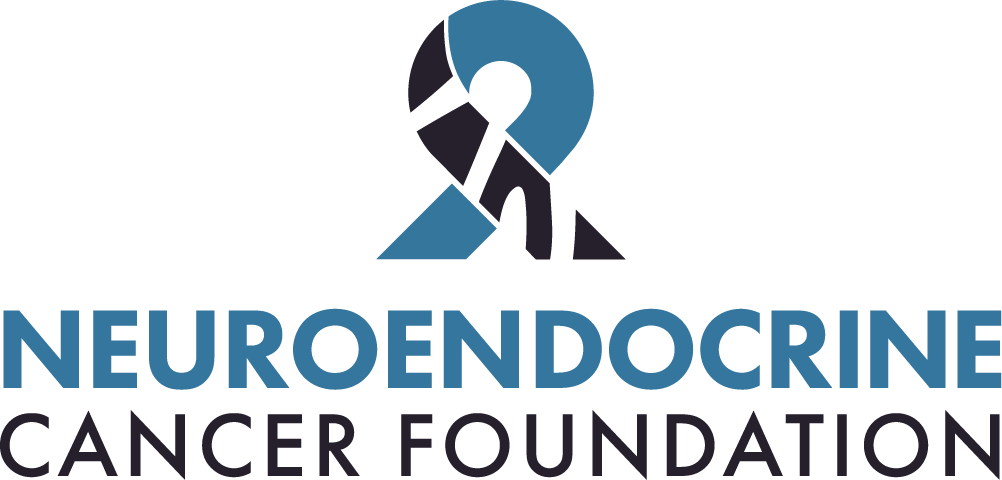
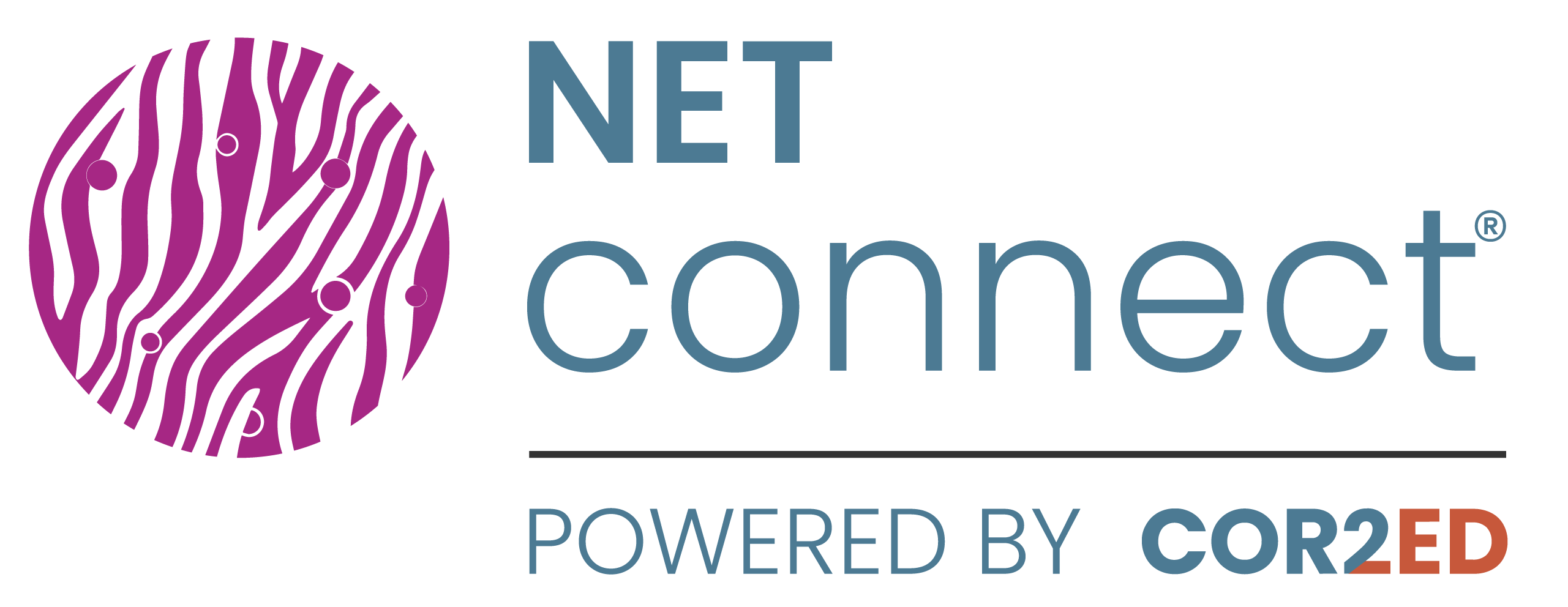

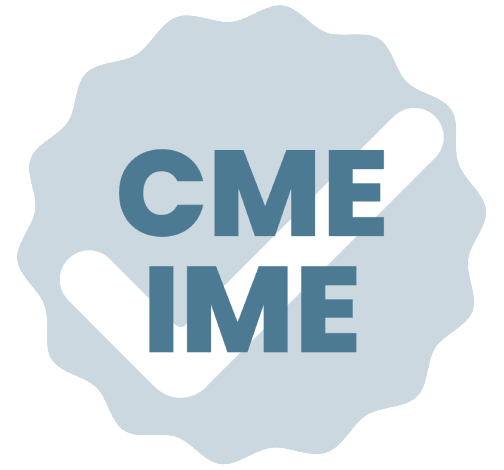
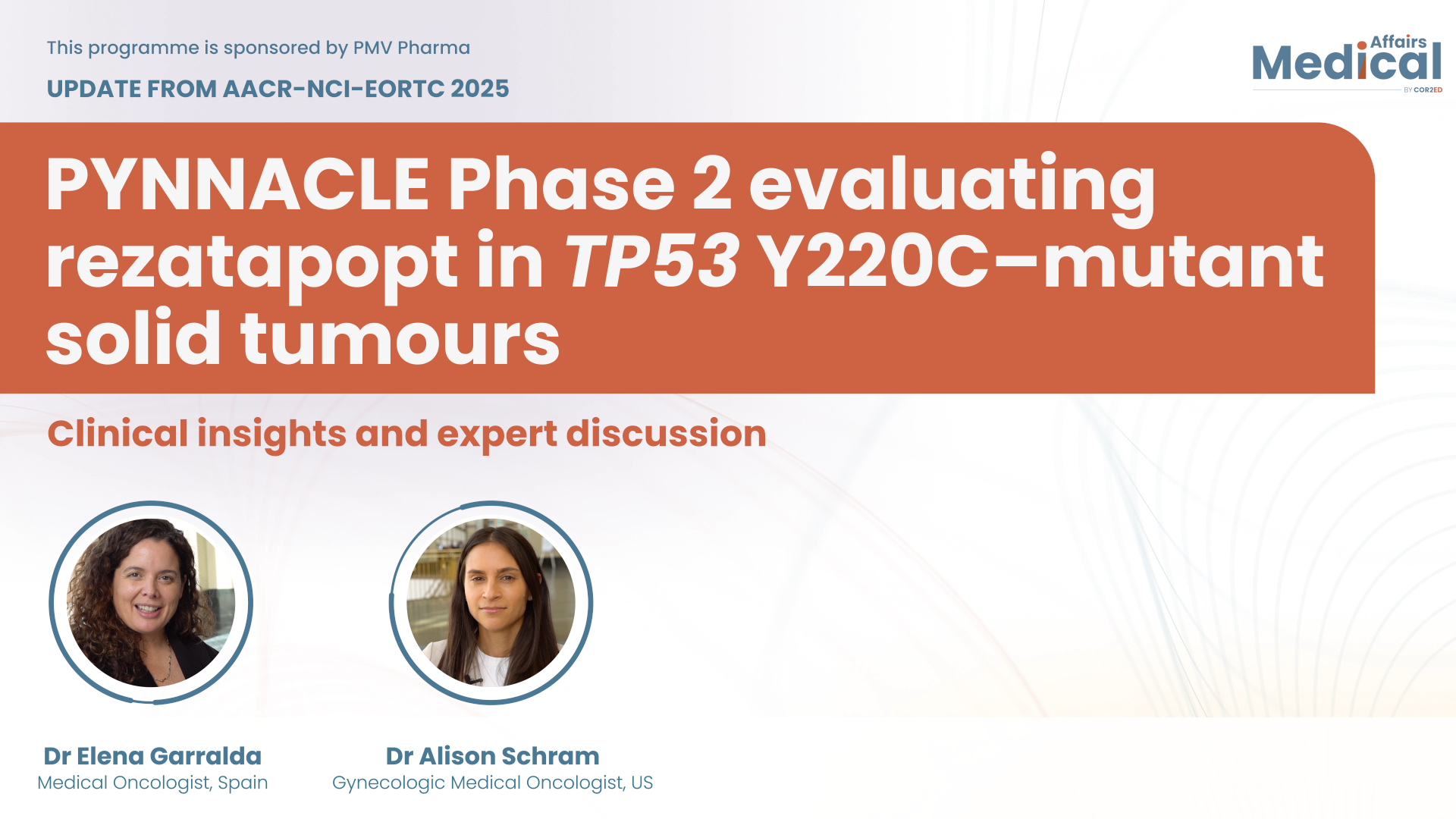
 Downloadable
Downloadable  MIN
MIN
 Oct 2025
Oct 2025 